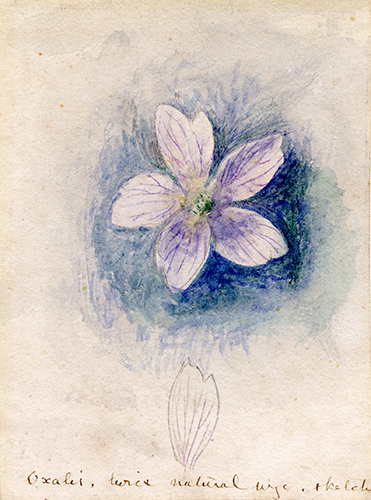Reactions and responses to the Greek myth of Persephone, by John Ruskin and others.
John Ruskin drew inspiration from the myth of Demeter and Persephone (or Ceres and Proserpina, their Roman equivalents) for both his writing and art. This exhibition explored a variety of works by numerous artists including Ruskin, showing their reactions and responses to the Greek myth of Persephone. It was divided across the Museum's Galleries.
Gallery 1 was curated to offer a variety of artistic responses to the Persephone myth, promoting its different aspects and interpretations. All items in this section were inspired by the myth, as Ruskin was. From the high art of Rossetti’s Proserpine (1874) to deeply antique Greek coins to the everyday culture of modern children’s books, this half of the display showed an impressive range of work and spanned thousands of years.

Charles Lenormant & Jean de Witte: Demeter, Triptolemus and Persephone, 'Elite des Monuments Céramographiques' (Vol. 3, Plate 56), 1844
Gallery 2 showed Ruskin’s ideas of Persephone (or Proserpina) through various examples of his work, including:
- Drawings of Greek coins
- Studies of flowers and plants
- Writing on Rose La Touche and her likeness to Proserpina
- Books, including one devoted to floral mythology entitled Proserpina


John Ruskin: Oxalis, and Portuguese Narcissus
This exhibition, curated by Alan Davis (Visiting Fellow, Ruskin Programme), included generous loans from Birmingham Art Gallery, Dinah Prentice, the Peter Scott Gallery and private collectors.



